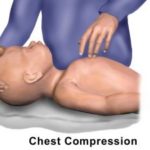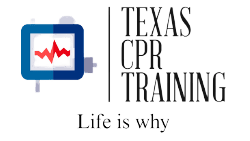
Steps For Doing Pediatric CPR
The American Heart Association revises and updates their guidelines and methodology for administering CPR every few years, adding more effective ways of saving lives. Their updates include revised algorithms that guide rescuers from start to end on the best way to perform CPR.
AHA’s new update included a new algorithm for performing pediatric CPR, i.e. CPR techniques for reviving children afflicted with a cardiac arrest. Since children and infants require more meticulous handling, the CPR technique is a bit different than the one taught for adults. In an emergency situation, the following guidelines might just make the difference between life and death:
- The first step in any emergency cardiac arrest situation is to ensure the scene’s safety. Make sure that the victim is lying on a straight surface with nothing blocking the way or having the potential to cause damage lying around.
- Immediately call the emergency responsive authorities or 911, stay on the scene and wait for their arrival. But while you are waiting for the paramedics to arrive, check if the victim is unresponsive and breathing.
- If the victim is unresponsive, gasping, or is not breathing at all, start administering emergency CPR.
- If there is only one rescuer on the scene, start CPR and call 911 after you have completed 5 cycles of 30 compressions and 2 breaths.
- Begin continuous and steady cycles of 30 compressions. Using the 1 or hand method, push straight down on the center of the chest at least 1/3 of the chest’s depth or 2 inches.
- If you are administering single-handed compressions on the child, place the heel of your hand over the lower half of the breastbone.
- To perform CPR with 2 hands, place heel of one hand over the lower half of the breastbone and put the other hand on top of the first one.
- Administer the compressions at a rate of 100 or 120 compressions/minute. (Note: let the chest go back to its original position before performing the next compression)
- Once you reach the count of 30 compressions, lift the chin forward with one hand and tilt the head back with the other.
- When the air passage is open, blow into their airway until you see their chest rise. Give 2 breaths this way, lasting for 1 second each.
- Repeat step 5 and perform another 30 compressions and repeat step 7 and 8 until the child becomes responsive or the paramedics arrive.
While these guidelines are incredibly useful and can help you turn a bad situation into a better one, you will be better prepared to tackle an emergency if you have received CPR training. An instructor with relevant experience in pediatric CPR will be able to teach you how to properly perform CPR on a child.
For example, the cause of the cardiac arrest might be a list of various reasons you might not know how to handle delicately. A professional CPR trainer can teach you the proper way of doing pediatric CPR and use the AHA’s guidelines and give your best to revive the child. This is the reason it is advised that you get CPR training.
Texas CPR Training can offer you the training needed. We offer CPR training throughout Dallas, Texas and all surrounding areas. Call 214-770-6872 for group training at your location, or if you are an individual you can register here for CPR training at our Garland location.
